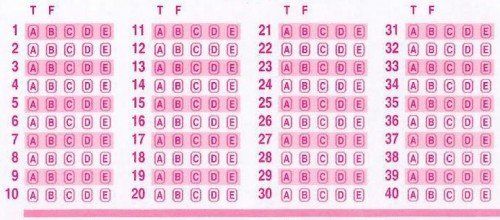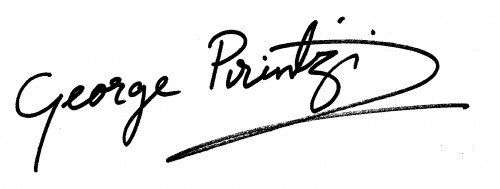Technical
OMR
OMR is the acronym used for Optical Mark Recognition
or Optical Mark Reader. OMR scanners are used to scan forms to detect the presence or absence of a mark in a predetermined position. Using an OMR scanner helps with automated data capture, as opposed to time consuming manual data entry.
Two early forms of OMR are paper tape and punch cards which use actual holes punched into the medium. Paper tape was used as early as 1857 as an input device for the telegraph and punch cards were created in 1890 and used as input devices for computers. The use of punch cards declined greatly in the early 1970’s with the introduction of personal computers.

The use of OMR is not only limited to schools or data collection agencies; many businesses and health care agencies use optical mark readers to streamline their data input processes and reduce input error. A large number of OMR Scanners used today are manufactured by Scantron, who are based in Eagan, Minnesota. DataCapture Systems are able to supply a wide array of these machines. Other OMR scanner manufacturers are Sekonic, Apperson, Nanhao, DRS and Datawin.
There are many applications for Optical Mark Recognition including: institutional research, community surveys, consumer surveys, tests & assessments, evaluations/feedback, data compilation, product evaluation, time sheets, inventory counts, membership subscription forms, and lotteries & voting
There are some disadvantages to Optical Mark Reading. If the user wants to gather large amounts of text then OCR or ICR is probably the best technology to use. For the most part however OMR provides a fast and accurate way to collect and input data. To see the OMR scanners that DataCapture Systems supply - click here
OCR
Optical Character Recognition, usually abbreviated to OCR, is the mechanical or electronic translation of images typewritten or printed text, captured by a scanner, into machine-editable text.
OCR is a field of research in pattern recognition, artificial intelligence and machine vision. Though academic research in the field continues, the focus on OCR has shifted to implementation of proven techniques.

Optical character recognition (using optical techniques such as mirrors and lenses) and digital character recognition (using scanners and computer algorithms) were originally considered separate fields. Because very few applications survive that use true optical techniques, the OCR term has now been broadened to include digital image processing as well.
Early systems required training (the provision of known samples of each character) to read a specific font. “Intelligent” systems with a high degree of recognition accuracy for most fonts are now common. Some systems are even capable of reproducing formatted output that closely approximates the original scanned page including images, columns and other non-textual components.
The accurate recognition of Latin-script, typewritten text is now considered largely a solved problem. Typical accuracy rates exceed 99%, although certain applications demanding even higher accuracy require human review for errors. Other areas–including recognition of hand printing (ICR), cursive handwriting, and printed text in other scripts (especially those with a very large number of characters)–are still the subject of active research.
For more complex recognition problems, intelligent character recognition systems are generally used, using artificial neural networks.
ICR
Intelligent Character Recognition, or ICR, is an advanced optical character recognition (OCR) or – rather more specifically – handwriting recognition system that allows fonts and different styles of handwriting to be learned by a computer during processing to improve accuracy and recognition levels.
Most ICR software has a self-learning system referred to as a neural network, which automatically updates the recognition database for new handwriting patterns. It extends the usefulness of scanning devices for the purpose of document processing, from printed character recognition (a function of OCR) to hand-written matter recognition. Because this process is involved in recognising hand writing, accuracy levels may, in some circumstances, not be very good but can still achieve 90%+ accuracy rates in reading handwriting in structured forms. Often to achieve these high recognition rates several read engines are used within the software and each is given elective voting rights to determine the true reading of characters. In numeric fields, engines which are designed to read numbers take preference, while in alpha fields, engines designed to read hand written letters have higher elective rights. When used in conjunction with a bespoke interface hub, hand-written data can be automatically populated into a back office system avoiding laborious manual keying and can be more accurate than traditional human data entry.
An important development of ICR was the invention of Automated Forms Processing in 1993. This involved a three stage process of capturing the image of the form to be processed by ICR and preparing it to enable the ICR engine to give best results, then capturing the information using the ICR engine and finally processing the results to automatically validate the output from the ICR engine.
This application of ICR increased the usefulness of the technology and made it applicable for use with real world forms in normal business applications. MurrayData offer a variety of ICR products to meet the specific needs of organisations and businesses requiring the use of this technology. Call us now on 0044 (0)1462 683533 to discuss your requirements for capturing hand written letters and numbers.
Barcodes
A barcode is an optical machine-readable representation of data. Originally, bar codes represented data in the widths (lines) and the spacings of parallel lines and may be referred to as linear or 1D (1 dimensional) barcodes or symbologies. But they also come in patterns of squares, dots, hexagons and other geometric patterns within images termed 2D (2 dimensional) matrix codes or symbologies. In spite of there being no bars, 2D systems are generally referred to as barcodes as well.
The first use of barcodes was originally designed to automate shopping checkout systems, a task where they have become almost universal today. Their use has spread to many other roles as well, tasks that are generically referred to as Auto ID Data Capture (AIDC).

Barcodes can be read by optical scanners called barcode readers, such as those available with the Scantron iNSIGHT products, or scanned from an image by special software such as ScanTools +, all supplied by DataCapture.
Image Clips
Most imaging systems allow for the capture of image clips. The system will allow for a pre-defined area on a form to be captured as an image, such as a signature within a defined ‘box’ on the form. The image clip may simply be used to store information, such as handwritten comments on a questionnaire to be reviewed and read later, or the capture of a students picture on a student housing application form. Alternatively the image clip can be passed to a data input operator for manual data entry copying directly from the image.
The ability to capture an image clip is a useful tool in data capture and processing applications, and can be used with other data capture methods such as OMR, OCR and ICR. MurrayData has extensive experience in designing systems and processes including the appropriate and effective use of image clips.

Accuracy
Various components within the Data Capture process need to be considered to determine the best technology to meet required accuracy levels. These components vary from technology to technology. DataCapture Systems can provide expert help and consultancy in designing the appropriate processes using the most relevant technology to meet the accuracy needs of your projects.
In Summary:
Optical Mark Recognition provides the highest levels of accuracy, especially when used with forms printed on OMR paper with OMR inks, using drop-out colours approved for the particular scanner being used.

Barcodes come very close to OMR in terms of being recognized and interpreted correctly, as long as the barcode label or overprint is placed within a defined section of the form.
OCR provides the next level of accuracy, dependant upon the fonts being used in the printed text. Paper quality should be considered, especially for double sided forms.
ICR provides the lowest level of accuracy due to the varying nature of individuals hand written print. Form design can improve this by using tried and tested techniques to assist the accuracy of the ICR engine. Again, the use of drop-out inks, determined by the scanner light colour, can improve the accuracy of the ICR engine. Due to these lower levels of accuracy a higher level of manual verification is required when using this technology.
Speed
The speed of processing a Data Capture project is determined by the speed of the scanner, the recognition engine’s processing time, and the time required for manual verification and editing.
In Summary:
OMR scanners generally operate at about 36 pages per minute or faster. Due to the nature of Optical Mark Recognition this applies to both single sided and double sided forms. There is no “recognition engine” processing with OMR, so the data capture is “on the fly”. With OMR there’s less verification or editing required than the other technologies, hence OMR has the advantages of both accuracy and speed.

OCR technology requires an image scanner to capture the image of the form being processed. The system then passes the image to the recognition process where the recognition engine interprets each image character as digital text. This text is then passed to the verification process for verification and, if required, editing. OCR is dependent upon the speed of the scanner, as well as the processor speeds, but generally is slower than OMR, though faster than ICR.
ICR technology applies the same process as OCR, but uses an ICR engine to recognise the characters. The speed of processing is generally slower than OCR, and the amount of verification is much higher than both OMR and OCR. This makes ICR the slowest of the three processes. However, it’s advantage is that it has the highest level of flexibility than the other technologies.
DataCapture can provide expert advice for clients wanting to design their capture projects, maximising speed, and accuracy whilst meeting budget requirements. To talk to us about any aspect of data capture, including speed, call us now on 0044 (0)1462 683533 or click here to contact us.


